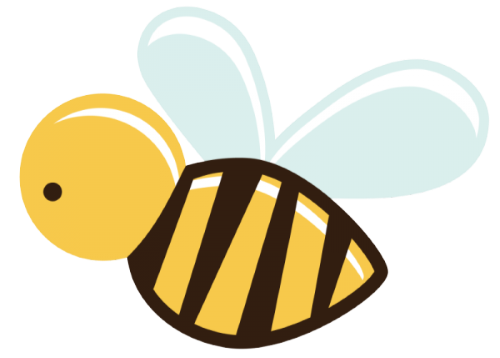Bee Q&A
Why do bees build their stores in hexagonal shapes?
Evolution has nudged the bees towards producing the most efficient natural structure. The hexagonal cell uses the least resource (wax) to produce both the strongest structure and the most efficient storage volume. This is just as well, because it takes 7 kilos of honey to produce 1 kilo of wax!
What colours can bees see? What are the best colours to grow?
Humans see the visible light spectrum from red through to violet, but bees see from yellow through to ultra violet. They are able to differentiate colours much more sensitively. There are many patterns on flowers which bees can pick out, but which humans cannot see. These patterns have evolved in flowers to guide bees directly to sources of nectar and pollen. Therefore the colours on plants which are most likely to attract bees are yellow, blue purple and violet.
How do bees realise when they need to seal in the honey
They are able to sense the amount of water in the honey, and also if the enzymes they add to the collected nectar have converted it into honey.

What is the difference between pollen, nectar and honey?
Pollen is the powdery collection of grains which bees collect, and also spread around other plants when they travel about foraging. This fertilises other plants so they can reproduce. Pollen is largely protein, which the bees combine with nectar to make “bee bread”. They feed this to developing bees. Nectar is a sugary liquid produced to attract the bees, and so encourage fertilisation. It is also much more watery than honey. The bees add enzymes to the nectar to convert the sugars into watery honey, and then they store it in the hexagonal cells to let the water evaporate off.
How do bees remember where the hive is?
Bees navigate using the sun, and are able to estimate distances. They are accurate to about 1 metre. Their memory of where their hive is lasts for about three weeks. If you need to move a hive it must be at least 4 kilometres away from the previous site, or else the bees would return it.
Will bees join another colony?
Yes, a few do migrate to a nearby colony if it is close, but it is unusual. It is also a potential cause of transfer of parasites and diseases.
If we don’t harvest wax, what do the bees use it for?
Bees reuse a small amount of their wax, mixing it with sap to produce propolis, which they use to seal up gaps.
Do different bees make honey and different bees make wax within the colony?
There are many different jobs to be done in a colony, and newly hatched ones start with feeding the young, and progress through housekeeping, building, nectar and pollen transfer and storage, and usually end up as foragers.
What should I do if I see a bee swarm?
Warn people away from the swarm, although they are not aggressive, but you never know who might have an allergy to bee stings. Then go to www.bbka.org.uk which is the website for the British Bee Keeper’s Association, and there you will find a map with the nearest available beekeeper and their contact details. They will help you if they can, by removing the swarm once it has settled.
How long does a bee live?
During the summer they live about six weeks. This is because foraging is very hard work, and there are predators out there. During the winter, most of the time is spent in the hive, and they may live 6 months.
